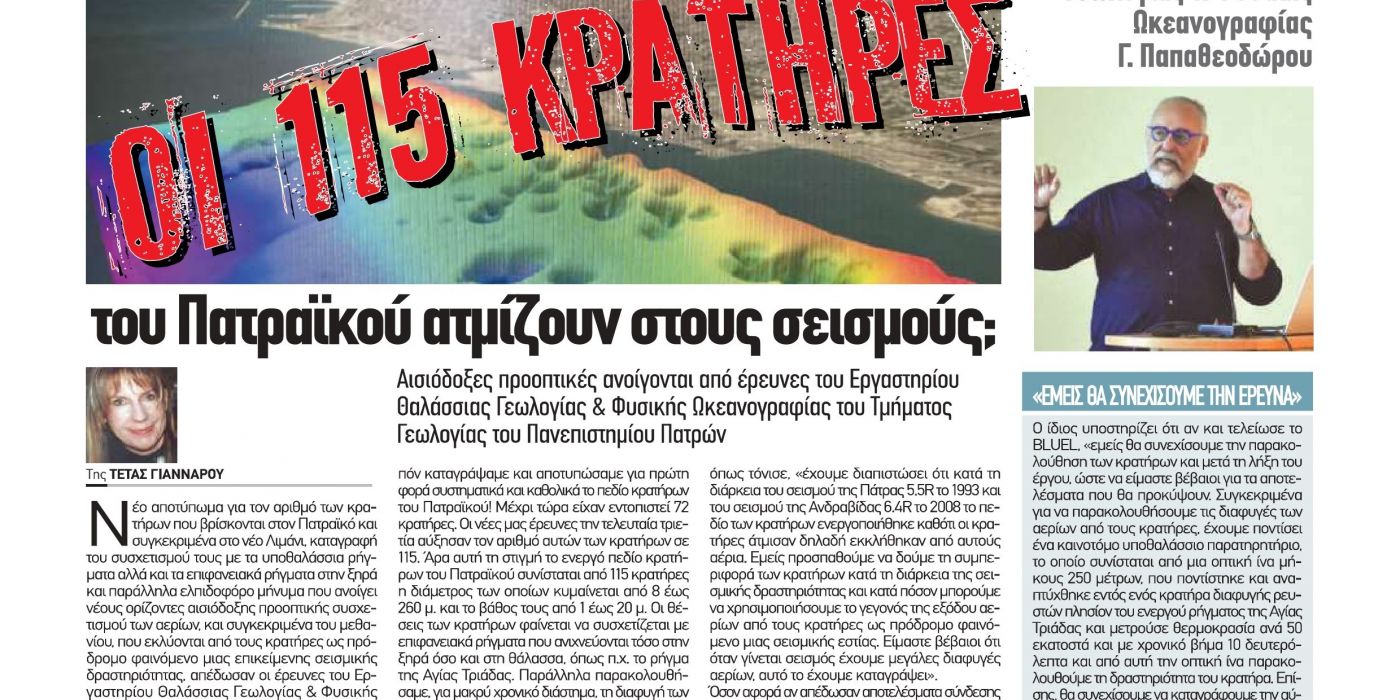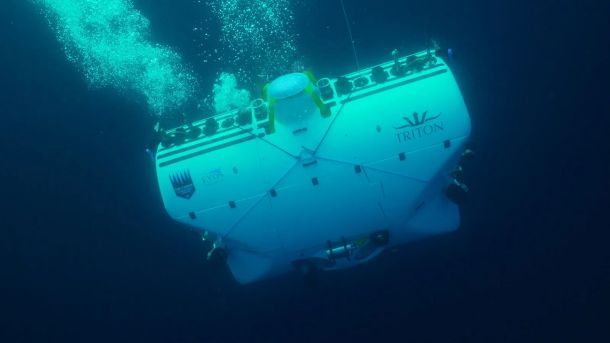
By Teta Giannarou:
New footprint for the number of craters found in Patraikos and specifically in the new Port, record of their association with the submarine faults and also the surface faults on land yielded the researches of Laboratory of Marine Geology & Physical Oceanography of the Geology Department of the University of Patras.
At the same time, new horizons were opened for an optimistic perspective regarding the correlation of gases, and specifically methane, that are released from the craters as a precursor phenomenon of an impending seismic activity.
The Dean of Positive Sciences, Professor of Marine Geology & Physical Oceanography George Papatheodorou, under whose direction the research project was carried out, spoke to the newspaper “Gnomi” about the data obtained from the research.
“First of all, let’s point out that the research was carried out in the framework of the BLUEL project, which was funded by the Hellenic Research & Innovation Foundation (HELRI) with the aim of initially recording and capturing for the first time systematically and universally the field craters of the Gulf of Patras.
Well, we also recorded we mapped for the first time systematically and universally the crater field of Patraikos! So far 72 craters have been identified. Our new surveys over the past three years have increased the number of these craters to 115. So right now the active crater field of Patraikos consists of 115 craters whose diameter ranges from 8 to 260 m and their depth from 1 to 20 m.
The positions of the craters seem to correlate with surface faults detected both on land and at sea, such as e.g. the fault of the Holy Trinity. At the same time, we monitored, for a long time, the escape of gases and mainly methane from the submarine active crater field of the Gulf of Patras, in order to investigate their relationship with seismic activity in Western Greece.
It must be emphasized that during the multi-month research of the research team, an attempt was made to examine the potential manifestation of changes from the escape of gases from the craters and their connection with precursory phenomena of earthquakes. In addition, we attempted to investigate whether and to what extent the escape of gases from the sea floor contributes to the greenhouse effect and therefore to global warming and climate change.”
“Craters release methane during earthquakes”
Referring to whether the seismic stimulation is related to the existing submarine craters, Professor Papatheodorou clarifies that they play no role in the excitation of seismic actionbut as he pointed out, “We have found that during the 5.5R Patras earthquake in 1993 and the 6.4R Andravida earthquake in 2008 the crater field was activated as the craters steamed that is, gases were summoned from them. We are trying to see the behavior of the craters during the seismic activity and whether we can use the fact of gases coming out of the craters as a precursor phenomenon of an earthquake focus. We are sure that when there is an earthquake we have large gas leaks that’s what we’ve recorded.”
Read the full article in greek: https://www.thebest.gr/.../721526-patra-oi-115-kratires-tou-patraikou-pou-atmizoun-stous-seismous
Article on Web
Latest Posts

Alarming pollution levels found in Mediterranean depths

"Why are the Posidonia meadows so valuable for our seas?": Article in LIFO
